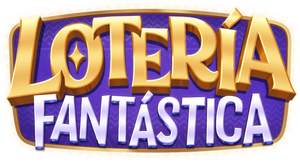
Featured Blog | This community-written post highlights the best of what the game industry has to offer. Read more like it on the Game Developer Blogs.
Here is a curated set of good sources and tools on the theme of writing for games with narrative. A lot came out recently, in particular oriented towards tools and practices.

Since the provocative post by Bogost, I've come across almost daily with remarkably good advice and tools for what by seemingly universal agreement is a specific skill requiring specific tools: writing narrative for games. I was getting confused about sources when discussing the theme with friends, so I put this list together.

I am writing an unlikely narrative game, as it is a classical managerial game on Football where actually the narrative about the team coach (Rocco) plays a central role. The interplay between championship results, players, their supporting team and the coach is turning out to be particularly hard to define - so I am trying to learn from everybody else.
Here is a curated set of good sources and tools on the theme of writing for games. I learned something or a lot from each of the posts listed below. Two I wrote myself – yes you learn new things also by writing down stuff yourself :-)
So for example the post on planning stimulated me to set this up for my Football Voodoom game narrative plot:

And see this attempts of plot / mechanics scheming by Daniele Giardini, my co-writer friend and arch-enemy:

Here is the list.
META AND OTHER MEDIA
Video Games Are Better Without Stories
“Film, television, and literature all tell them better. So why are games still obsessed with narrative?”
Here, by Ian Bogost.
How we design games and why
“How game design practice is shaped by business, technology and culture”
Here, by Katharine Neil.
Stories in Games Aren't Problems, They're Solutions
“Lots of video games have terrible stories, but that's no reason to give up telling them.”
Here, by Austin Walker.
Writing for Animation, Comics, and Games
“Animation, comics, and games fall into the category I think of as “shorthand” writing. This is in contrast to prose writing, where a writer can write plot, description, and dialogue to any length, and can cover all of the senses—sight, sound, touch, taste, smell—using both external storytelling (description, dialogue) and internal storytelling (thought processes, emotional description).
This specialized form of “shorthand” writing requires the discipline to write within a structured format; to pare description down to an absolute minimum; to boil dialogue down to a pithy essence; and to tell concise, tightly plotted stories.”
Here (Christy Marx).
Writing and designing game dialogues
How to facilitate writing for games? And how to design an in-game dialogue user interface?
Here, by Daniele Giardini and myself.
MECHANICS
In-between Spaces And Their Design
“Here I draw attention to the game spaces that are “in-between” core game play: between fights, battles, attempts, in-level play. Those spaces where your heroes rest a while before the next exploration.”
Here, by myself.
Planning - The Core Reason Why Gameplay Feels Good
“The main reason that people find Dear Esther unengaging is not because they cannot fail, or because there is nothing to compete against. It's because the game doesn't allow them to form and execute plans. We need to figure out ways of fixing this.”
Here, by Thomas Grip.
Level Design Workshop: A Narrative Approach to Level Design
"In this 2017 GDC talk, Ubisoft's Jolie Menzel explains why a shared understanding of narrative gives a level designer a guide for everything from the pace of their level to an understanding for which assets should be placed where to tell a convincing story using physical space."
Here, by Jolie Menzel.
TOOLS MODELS AND DEVELOPMENT
The future of dialogue in games
"The challenges of writing dialogue that's both fun and functional, and how dev tools can lead to better writing."
Here by Alex Wiltshire.
Ink
Adventures in Text: Innovating in Interactive Fiction
“In this talk, we'll describe how our design strategies evolved across the course of three games, with examples focused on how we make choices that matter, how we pace and coerce our narrative, and how we integrate the words into the wider game design. We'll show with examples how we've optimized our in-house scripting language to facilitate the rapid creation of large quantities of highly-contextual, high-quality text, and how we handle consistency and story logic in a massively-branching environment.”
Here by Jon Ingold https://twitter.com/joningold
Ink: The Narrative Scripting Language Behind '80 Days' and 'Sorcery!'
This talk will outline how the language works, and how it can be used to drive a game's content, facilitate branching, and even allows complexity that approaches procedural narrative in some scenes.
Here by Joseph Humfrey.
Ink: get the tool: http://www.inklestudios.com/ink/
Outspoken
“A powerful writer-centric dialogue editor built around speed and ease of use.” [Unity3d plugin]
Here, by Daniele Giardini.
"Videogame Dialogues: Writing Tools And Design Ideas": I recorded a video showing Daniele's Outspoken in action.
Character Trait Model: How Unhappy Is Unhappy
How to represent the evolving relation between characters in games?
Here, by myself.
Read more about:
Featured BlogsAbout the Author(s)
You May Also Like








